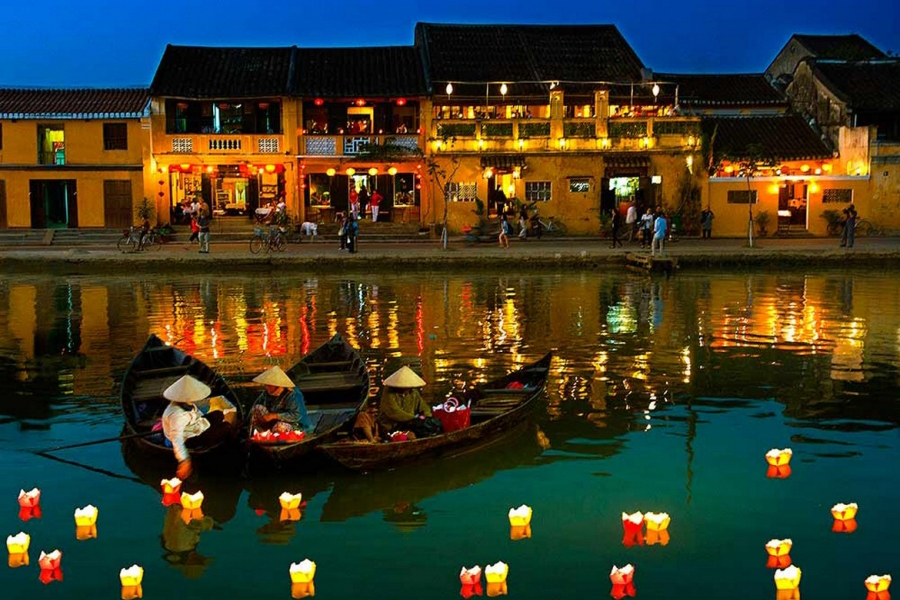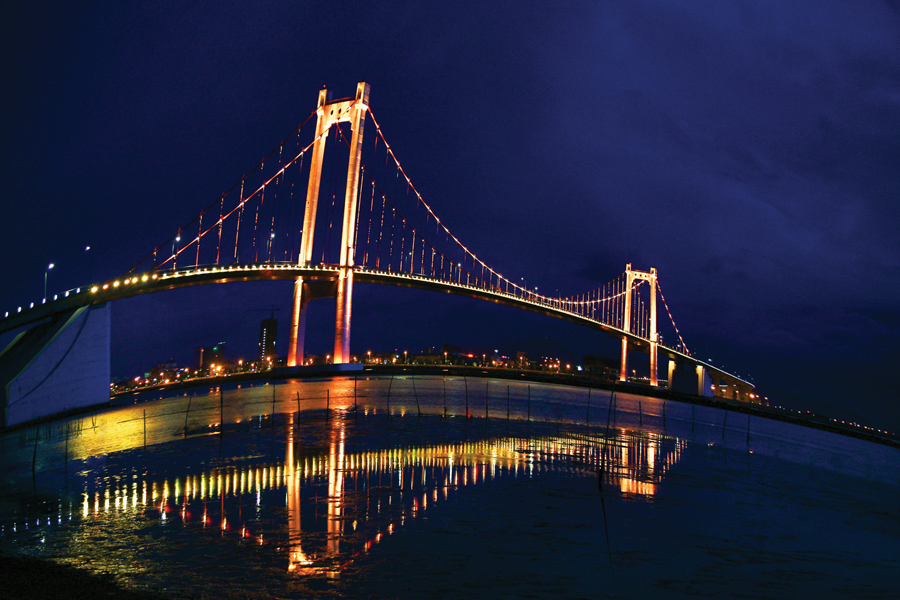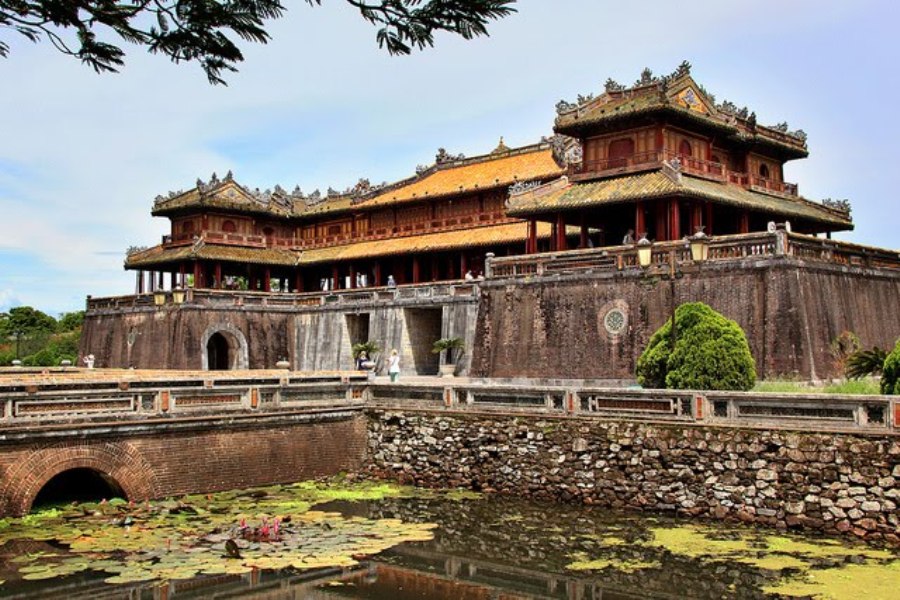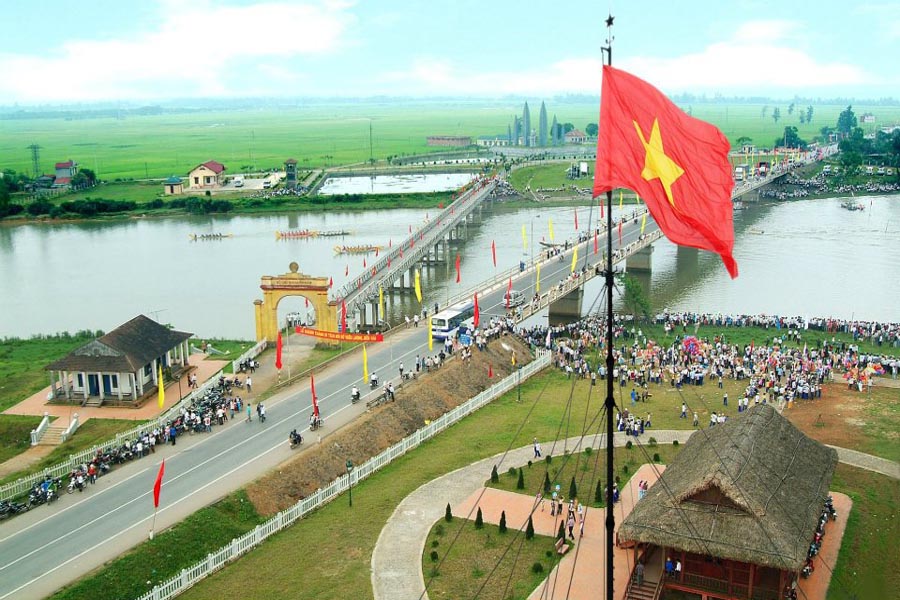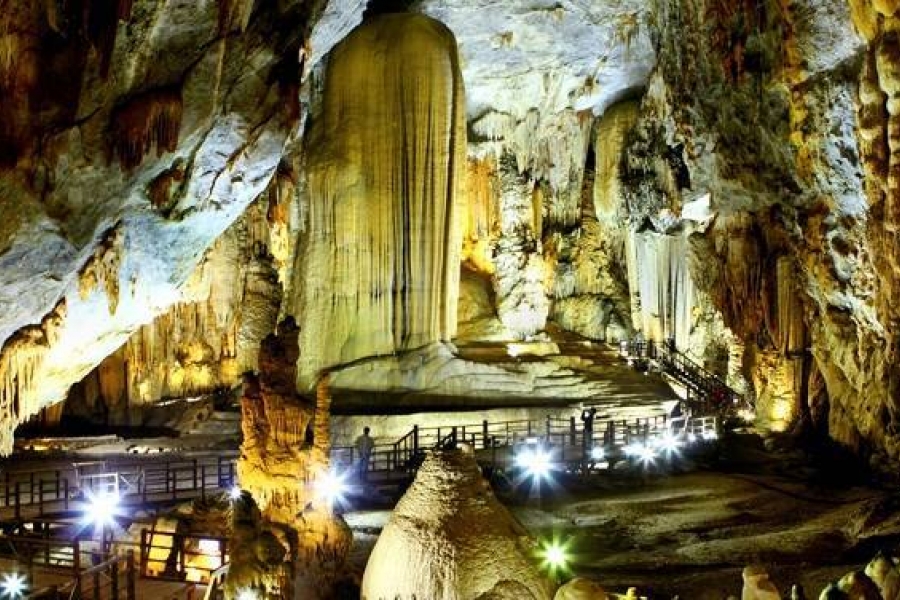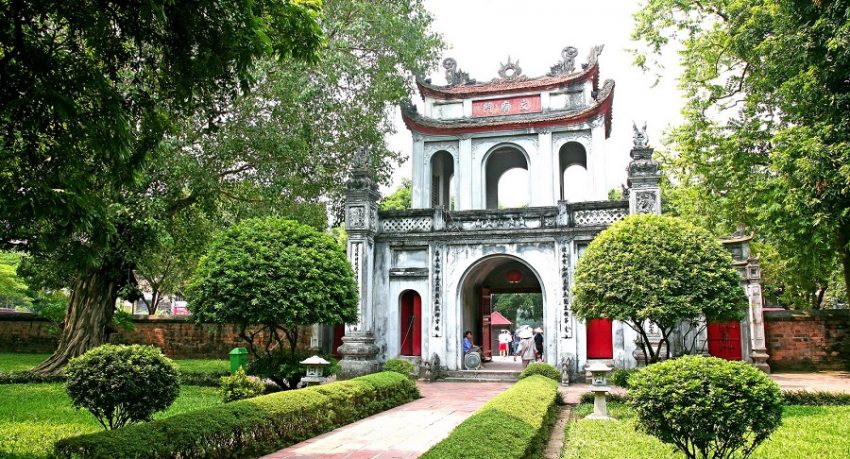The temple of letters is a worship temple founded by the Nguyen dynasty to clebrated scholars of Confucianim.
Formerly, many various Temple of letters were built by the Nguyen Lords in the capital and moved to three different places: Trieu Son villgae, Luong Qoang village and Long Ho village.
In 1808, when realizing the constrution land for Temple of Letters in Long Ho was not big enough, Gia Long and his Imperial court decided to choose a low hill beyond the heavenly lady pagoda, on the left bank of the Perfume river, i.e. the current ponsition, to built a new imposing and striking Temple of Letters. At the Time, the national school was also established there and worked until 1908 befor it was moved into the citadel. The construction was commenced on 17th April 1808 and finished on 9th December 1808.
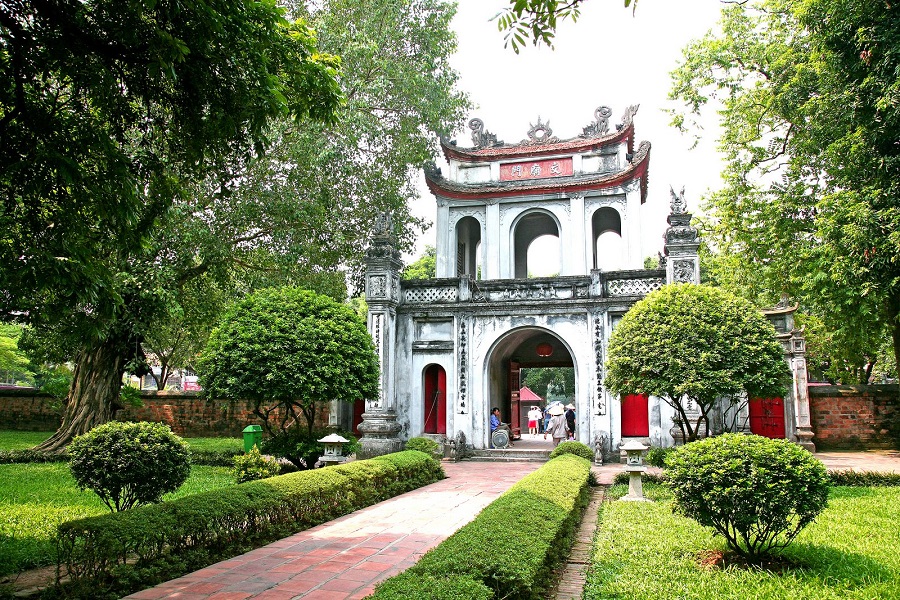
The Temple of Letters faces south. All main constructive work were built on the surface on top of the hill three meters higher than the surrounding land. In front of it is the Perfume river, in the back are villages, hills and mounts which sparead from Truong Son range, surrounding the back of the Temple of Letters. All items of Hue Temple of Letters were erected on a square surface 160m Long on each side enclosed by La Thanh (surrounding wall). There was once an ensemble of big and small constructions including 32 steles which bore names of doctors and four other steles, Temple of Letters (the main temple delicated ton confucius and Tu Phoi (four scholars), Thap Nhi Triet (the 12 philosophers). East house and west house (delicated to thap nhi hien – 12 talents and former scholars), Devine store-house, devine kitchen, soil god teple, dai thanh gate, temple main gate, etc. All hauses were built of ironwood and other rare, valuable materrials. The architecture, interior and exteror decorations are symmetric, imposing and literary.
Van Mieu was many times renovated and many other minor constructions were buil, especially in Minh Mang and Thieu Tri’s time. Under Gia Long’s regime, the imperial court only organized Huong examinatons, but not Hoi examinations so that trere were no steles for doctors in Van Mieu at that time. From Minh Mang’s time onwards, Hoi examinations were held so thatsteles bearing the names of successful candidates were erected here. these “Tien si danh bia” – “Steles bearing doctors’ names” were gradually erected on the yard of the main temple from 1831 to 1919, the year in which the last Hoi examinations was held in Khai Dinh’s time.
For the past nearly half a century, wars and nature have damaged Van Mieu into a desrted and desolated place. Houses and walls have been collpsed and ruined. Remains of greatest cultural and historic value now are the 34 steles.
Two small houses shelter two steles with empror Minh Mang’s article Thieu Tri’s inscrip tions. The left tele inscribed Minh Mang’s article dating 17th arch 1936, which wrote that the eunuchs were considered ones who could not make successful ways in life. The right stele inscribed Thieu Tri’s article dating december 2nd 1844 which said that the royal maternal relatives could not seize power, 32 stone steles are set in two facing rows on both sides of the court.All these 32 steles are put on tortoises made from Thanh stone or marble. The docter steles here are not as big as those in Honoi,but their sizes are more equal, with various poems and decoration. On these steles are names, ages and places of birth of 239 successful candidates in national examinations organized in the Nguyen dynadties.
Hue Temple of Letters is a valuable historic remains. To visit Van Mieu, tourists can understand more about the tradition of knowledge appreciation, schoolars administation and study encouragement of our ancestors from the old time.
Copyright by Phong Nha Pioneer Travel
Categories: Blog
